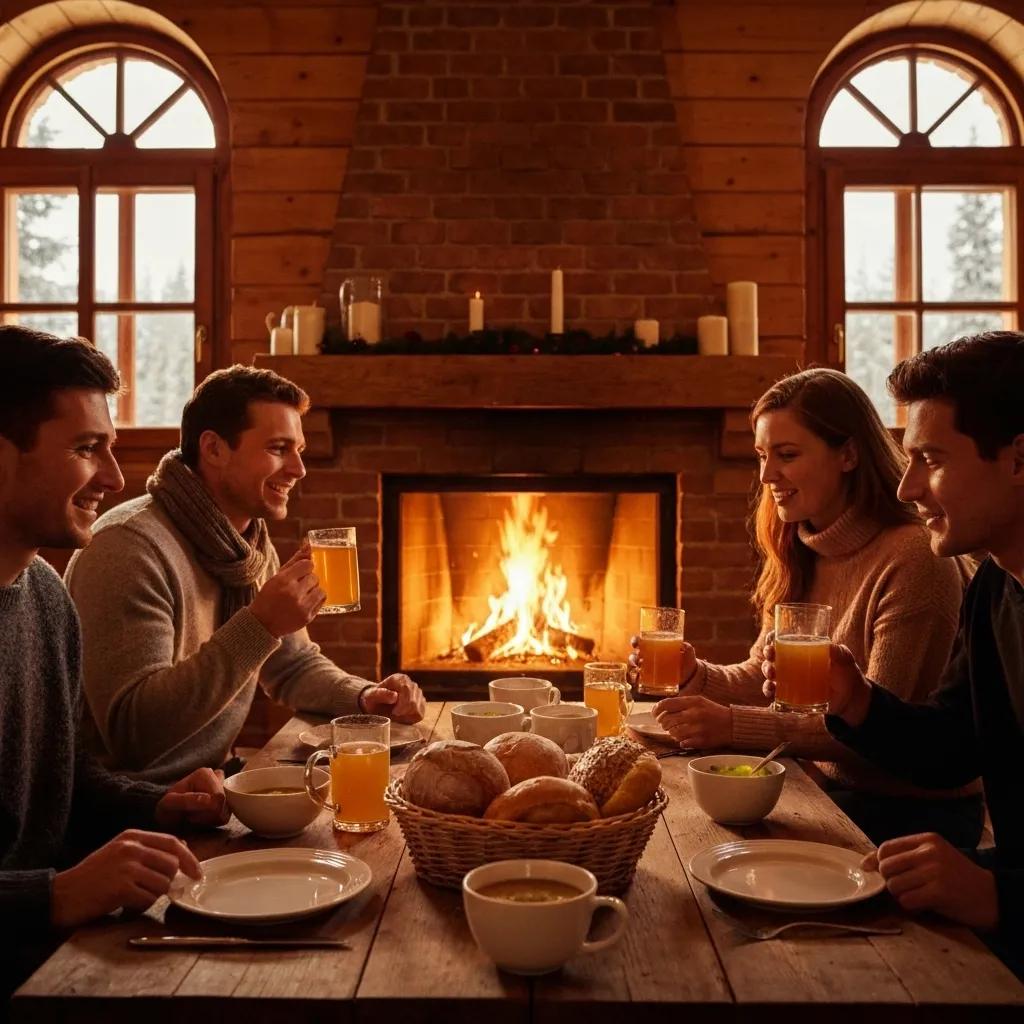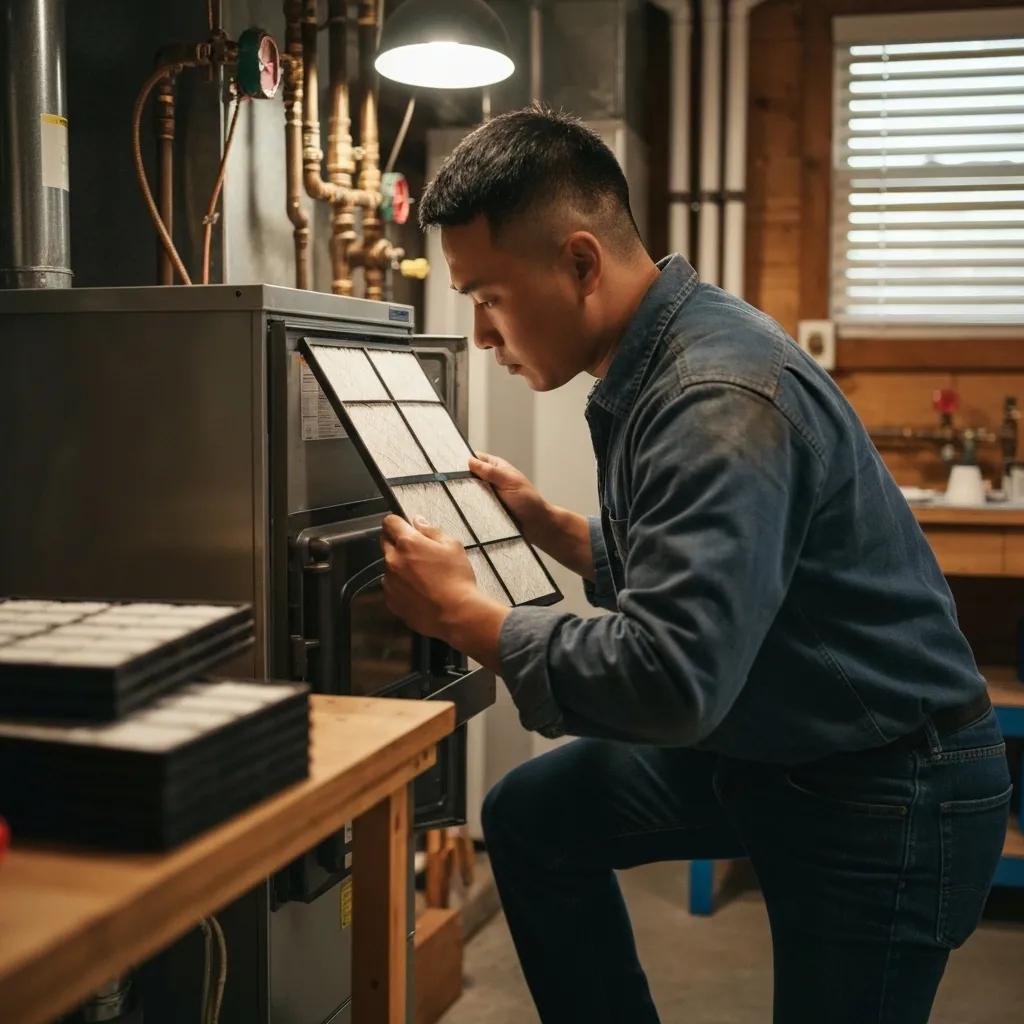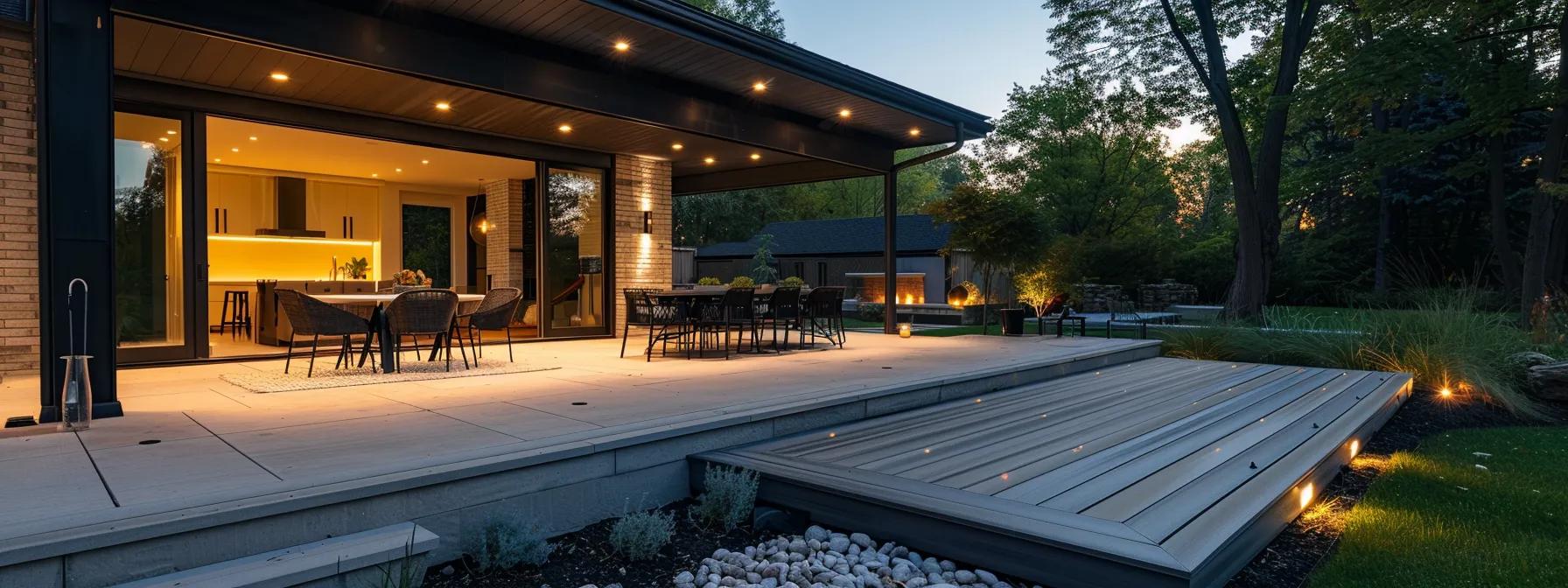
Home Maintenance Checklist for Surviving Iowa Winters: Essential Preparation and Protection Tips
Iowa ranks among the top 10 states in per capita energy consumption, making winter home maintenance essential to curb heating costs, prevent frozen pipes, and avoid structural damage. This Home Maintenance Checklist for Surviving Iowa Winters gives homeowners a step-by-step guide—from exterior preparations and pipe protection to HVAC tune-ups, draft sealing, safety planning, foundation inspection, and integrating Busy Builders’ professional expertise—to secure comfort, efficiency, and peace of mind all season long. You’ll discover how to safeguard your roof, gutters, plumbing, heating system, building envelope, emergency readiness, foundation integrity, and when to call on Busy Builders for reliable winter repairs and upgrades.
How Do I Prepare My Iowa Home Exterior for Winter Weather?
Exterior preparation involves sealing and protecting the home envelope against freezing temperatures, snowloads, and ice dams to maintain structural integrity and reduce heat loss. By cleaning gutters, inspecting roofing materials, and winterizing outdoor fixtures, homeowners prevent water intrusion and costly repairs later. Proper exterior maintenance also extends the lifespan of siding, trim, and landscaping through freeze-thaw cycles.
Why Is Roof and Gutter Maintenance Critical for Iowa Winters?

Roof and gutter maintenance prevents snowmelt from refreezing at the eaves and forming ice dams that force water under shingles, leading to leaks and water damage. Clearing debris ensures unobstructed drainage, while inspecting flashing and shingles preserves the roof’s weatherproof barrier. Regular maintenance also avoids attic moisture that can rot rafters and insulation, protecting both structure and indoor comfort.
What Are the Key Steps for Roof Inspection and Ice Dam Prevention?
Before winter arrives, follow these steps to inspect your roof and guard against ice dams:
- Walk the perimeter and remove visible debris from gutters and downspouts.
- Check for loose, curling, or missing shingles and replace damaged sections.
- Verify that roof flashing around chimneys, vents, and dormers is intact and sealed.
- Ensure attic insulation and ventilation meet recommended R-value to prevent uneven roof warming.
- Install heat cables or snow guards on vulnerable roof edges when ice dams recur.
Each step reduces the risk of water infiltration and structural strain, guiding us to the next essential winterization task: outdoor plumbing and landscaping protection.
How Should I Winterize Outdoor Plumbing and Landscaping?
Outdoor plumbing and landscaping winterization protects water lines, irrigation systems, and ornamental features from freezing and cracking.
Begin by shutting off exterior water valves and draining garden hoses, sprinkler systems, and frost-free spigots. Prune overhanging branches that can load the roof or gutters with snow, and apply mulch around vulnerable shrub roots. Disconnect and store hoses to avoid pipe stress.
When Should I Call a Professional for Exterior Winter Repairs?
Homeowners should seek professional help when:
- Significant roof damage or widespread missing shingles is evident.
- Gutters sag, pull away from fascia, or show interior rust.
- Chimney flashing leaks recur after DIY sealing.
- Ice dams persist despite proper attic insulation.
In these cases, licensed contractors can perform safe roof repairs, reinstall gutter systems, and upgrade attic ventilation and insulation to prevent future issues.
How Can I Prevent Frozen Pipes and Water Damage in Iowa Homes?
Frozen pipes occur when water trapped in cold sections of the plumbing system expands, causing fittings to crack or burst and leading to costly water damage. Protecting pipes through insulation, heat tape, and proper drainage preserves plumbing integrity and maintains household safety. Early prevention also reduces emergency repair costs and water cleanup needs.
What Causes Frozen Pipes and How Can I Protect Them?
Cold exterior walls, uninsulated crawlspaces, and sudden temperature drops are primary causes of pipe freezing. To protect pipes:
- Insulate exposed pipes in basements, attics, and crawlspaces with foam sleeves or fiberglass wrap.
- Maintain a minimum indoor temperature of 55°F even when away.
- Seal gaps around foundation and service penetrations to block drafts.
What Are the Best Pipe Insulation and Drainage Practices?
Below is a comparison of common insulation methods and drainage tactics for winter pipe protection:
| Insulation Type | R-Value per Inch | Typical Application |
|---|---|---|
| Foam Pipe Sleeves | 3.0 | Basements, crawlspaces |
| Fiberglass Wrap | 2.5 | Irregular pipe shapes |
| Heat Tape (Electric) | — | Highly exposed exterior pipes |
Drainage Practices
- Open indoor faucets slightly to allow a trickle of water during extreme cold.
- Locate and shut off outdoor supply valves, then drain lines thoroughly.
Proper insulation paired with controlled drainage keeps water moving and prevents freezing.
How Do I Detect and Respond to Early Signs of Pipe Freezing?
Watch for these warning signs of imminent freezing:
- Unusually cold or frost-coated pipe surfaces.
- Reduced water flow or sputtering when faucets are turned on.
- Strange noises such as gurgling or whistling within pipes.
If you spot any indicators, open the nearest faucet and apply gentle heat with a hair dryer or heat lamp. Avoid open flames and shut off the main water supply if the pipe shows stress cracks.
What HVAC Maintenance Is Needed to Ensure Efficient Winter Heating in Iowa?
Maintaining your HVAC system before the cold season prevents breakdowns and maximizes energy efficiency by ensuring all components operate at peak performance. Regular inspections, filter changes, and system calibrations help furnaces and heat pumps maintain consistent indoor temperatures without overworking, reducing heating costs and carbon footprint.
Why Is Annual HVAC System Inspection Important Before Winter?
An annual professional inspection confirms that burners ignite properly, combustion gases exhaust safely, and electrical components function reliably. Technicians also test pressure switches, clean heat exchangers, and verify thermostat accuracy. These checks prevent mid-winter failures and support safe, efficient heating throughout Iowa’s harshest months.
What DIY HVAC Winterization Tasks Can Homeowners Perform?

Homeowners can carry out these simple tasks to boost system reliability:
- Replace or clean air filters every 60–90 days to maintain airflow.
- Program a smart thermostat for energy-saving setback schedules.
- Clear debris at outdoor heat pump units and maintain 2 feet of clearance.
- Lubricate blower motor bearings if accessible.
Completing these tasks contributes to smoother operation until the next professional service.
How Do High-Efficiency Furnaces and Heat Pumps Save Energy?
High-efficiency systems convert more fuel into usable heat, reducing waste and lowering utility bills:
| System Type | Efficiency Rating | Typical Annual Savings |
|---|---|---|
| Gas Furnace (90% AFUE+) | 90–98% | 10–30% on heating cost |
| Electric Heat Pump (HSPF 8+) | HSPF 8–10, SEER 16+ | 20–50% compared to base models |
Investing in upgraded equipment pays dividends through sustained energy savings.
When Should I Schedule Professional Furnace or Heat Pump Service?
Arrange professional maintenance when:
- The system reaches one year of operation since its last tune-up.
- You observe uneven heating, cold spots, or frequent cycling.
- Winter approaches and the thermostat call-for-heat triggers longer runtimes.
Timely service preserves efficiency and extends the life of your heating investment.
How Do I Seal Drafts and Improve Energy Efficiency in My Iowa Home?
Sealing drafts around windows, doors, and bypasses in the building envelope stops unwanted air infiltration, stabilizes indoor temperatures, and cuts heating expenses. By applying weatherstripping, caulk, and insulation upgrades, homeowners strengthen energy efficiency and enhance comfort without major remodeling.
What Are the Best Methods to Seal Windows and Doors for Winter?
Prioritize these sealing techniques to lock in warmth:
- Install adhesive weatherstripping on operable sashes and door bottoms.
- Apply silicone-based caulk around static frame joints and trim.
- Use foam gaskets on electrical outlets on exterior walls.
- Hang insulated curtains or window quilts for added thermal barrier.
Effective sealing reduces cold drafts and ensures consistent comfort.
How Can Insulation Upgrades Reduce Heating Costs?
Upgrading insulation increases the home’s R-value and delivers measurable savings:
| Location | Typical R-Value Upgrade | Estimated Annual Savings |
|---|---|---|
| Attic | R-38 → R-60 | 10–20% |
| Exterior Walls | R-13 → R-21 | 5–10% |
| Basement/Crawlspace | R-11 → R-19 | 5–8% |
Improved insulation lowers thermal bridging and preserves heat where it matters most.
What Are Effective Weatherization Tips for Iowa Winters?
Comprehensive weatherization combines sealing and insulation with these strategies:
- Install storm doors and windows for extra glazing protection.
- Add attic baffles to ensure proper soffit-to-ridge ventilation.
- Seal gaps around ductwork, plumbing penetrations, and foundation vents.
- Balance indoor humidity (35–45%) to reduce convective heat loss.
Completing these tasks primes your home envelope for maximum efficiency.
How Much Can I Save on Energy Bills by Improving Home Sealing?
Sealing air leaks and upgrading insulation can cut annual heating costs by up to 40%. Addressing the top five leak areas—attic hatches, recessed lighting, duct joints, plumbing chases, and window frames—yields the greatest payback, lowering utility expenses and reducing carbon footprint.
What Safety and Emergency Preparedness Steps Should Iowa Homeowners Take for Winter?
Winter storms bring power outages, road closures, and life-threatening conditions, so assembling emergency kits, maintaining detectors, and planning backup strategies protect occupants and property during extreme events. A proactive safety plan minimizes risk and ensures quick recovery from weather-related disruptions.
What Should Be Included in a Winter Storm Emergency Kit?
Gather these essentials in an easy-access kit before winter arrives:
- Three-day supply of nonperishable food and bottled water.
- Battery-powered radio, flashlight, extra batteries, and power bank.
- Blankets, warm clothing, sturdy boots, and hand warmers.
- First-aid supplies, prescription medications, and hygiene items.
- Portable generator fuel and carbon monoxide detector for safe use.
A well-stocked kit keeps families safe until help or power is restored.
How Do I Check and Maintain Carbon Monoxide and Smoke Detectors?
Safety alarms save lives by early detection of hazards. To maintain them:
- Test each detector monthly by pressing the test button.
- Replace batteries annually or when the low-battery chirp sounds.
- Clean sensors with a vacuum brush attachment every six months.
- Replace alarms every 5–7 years according to manufacturer guidelines.
Reliable detectors reduce the risk of undetected leaks or fires during winter.
What Are Best Practices for Preventing Winter Power Outage Risks?
Minimize outage impacts by:
- Installing a whole-house surge protector at the electrical panel.
- Having a portable generator with automatic transfer switch.
- Securing backup heating such as wood stoves or propane units.
- Elevating critical equipment off basement floors to avoid flooding.
These measures ensure safety and maintain essential systems when the grid is down.
How Can I Prepare My Home for Severe Iowa Winter Storms?
Storm readiness involves reinforcing the building envelope and utility systems:
- Trim or remove dead tree limbs within 20 feet of the house.
- Secure roof vents, chimney caps, and siding panels against high winds.
- Insulate and protect utility meters and outdoor condensers.
- Develop an evacuation or shelter-in-place plan with emergency contacts.
By preparing proactively, homeowners minimize storm damage and ensure faster recovery.
How Do I Inspect and Repair My Home Foundation to Withstand Iowa Winters?
Foundation inspection identifies cracks, water intrusion points, and frost heave risks before cold sets in, preserving structural stability and preventing basement flooding. Early detection and targeted repairs maintain load-bearing capacity and prevent settlement issues aggravated by freeze-thaw cycles.
What Are Common Foundation Issues Caused by Winter Weather?
Iowa’s cold leads to these foundation challenges:
- Frost heave pushing upward on footings and causing wall cracks.
- Hydrostatic pressure from melted snow saturating soils against walls.
- Shrink-swell soils causing differential movement and settlement.
- Ice dams at grade leading to basement seepage and efflorescence.
How Can I Perform a Basic Foundation Inspection Before Winter?
Follow this checklist to inspect your foundation:
- Examine interior basement walls and floors for hairline cracks or bowed walls.
- Walk exterior perimeter to spot horizontal cracks or mortar deterioration.
- Check grading to ensure soil slopes away from the foundation at 5% grade.
- Inspect foundation vents and seal any that are not frost-proof.
When Is Foundation Repair Necessary and How Can Contractors Help?
Professional intervention is warranted when:
- Cracks exceed 1/4 inch in width or show horizontal displacement.
- You notice persistent dampness or mold growth in the basement.
- Doors and windows stick due to foundation settlement.
Licensed contractors use methods such as interior/exterior waterproofing, carbon-fiber reinforcing, and helical pier installation to restore and stabilize your foundation before winter’s freeze-thaw cycles intensify.
How Can I Integrate Busy Builders’ Services Into My Winter Home Maintenance Plan?
Busy Builders LLC is a licensed general contractor serving Des Moines and surrounding Iowa communities, offering expert roofing, plumbing, HVAC, insulation, and foundation services. Integrating their capabilities into your maintenance plan ensures that complex repairs and upgrades meet the highest quality, safety, and sustainability standards all season long.
Which Winter Repairs and Upgrades Does Busy Builders Provide?
Busy Builders specializes in:
- Roof inspections, snow guard installation, and gutter system replacement.
- Pipe insulation, leak repair, and outdoor faucet winterization.
- Furnace tune-ups, heat pump servicing, and thermostat upgrades.
- Attic and wall insulation upgrades, air sealing, and window/door replacement.
- Foundation waterproofing, crack injection, and structural piering.
Their team’s expertise and transparent communication deliver reliable results that protect your home.
How Can Professional Remodeling Improve Winter Home Resilience?
Professional remodeling transforms critical areas for lasting winter performance:
- Attic conversions with high-R insulation prevent heat loss and ice dam formation.
- Basement finishing with moisture-resistant materials protects living spaces and foundation walls.
- Window and door replacements with ENERGY STAR® ratings reduce air infiltration and condensation.
These upgrades not only enhance comfort but also increase property value and energy savings.
How Do I Schedule a Consultation for Winter Maintenance Services?
To arrange a winter maintenance consultation with Busy Builders:
- Call or email to describe your home’s age, size, and winter concerns.
- Provide photos or videos of problem areas for an initial assessment.
- Schedule an on-site visit for a detailed inspection and estimate.
- Review and approve a transparent proposal outlining scope, timeline, and guarantees.
Professional planning ensures timely repairs and upgrades before temperatures drop.
With exterior, plumbing, HVAC, sealing, safety, and foundation checks complete—and Busy Builders’ reliable services on call—you’re equipped to face Iowa’s winter with confidence and energy efficiency.
Contact Busy Builders today to secure expert support and keep your home warm, protected, and cost-effective throughout the cold season.
Frequently Asked Questions
What are the signs that my home needs winter maintenance?
Signs that your home requires winter maintenance include drafts around windows and doors, uneven heating, visible cracks in the foundation, and ice dams forming on the roof. Additionally, if you notice increased energy bills or if your HVAC system is making unusual noises, these can indicate that maintenance is needed. Regular inspections can help identify these issues early, allowing for timely repairs and preventing more significant problems during the winter months.
How can I improve my home's energy efficiency during winter?
Improving your home’s energy efficiency during winter can be achieved through several methods. Start by sealing drafts around windows and doors with weatherstripping and caulk. Insulating your attic and walls can significantly reduce heat loss. Additionally, consider upgrading to energy-efficient windows and doors, and using programmable thermostats to optimize heating schedules. Regular HVAC maintenance, such as changing filters and cleaning ducts, also enhances system efficiency, leading to lower energy costs.
What should I do if I experience a power outage during winter?
If you experience a power outage during winter, first ensure your safety by avoiding the use of candles and instead using battery-powered lights. Keep your refrigerator and freezer doors closed to preserve food. If the outage lasts for an extended period, consider using a portable generator for essential appliances, ensuring it is placed outside to avoid carbon monoxide buildup. Stay informed about the outage status through a battery-powered radio or mobile device, and have a plan for staying warm.
How can I protect my home from ice dams?
To protect your home from ice dams, ensure proper insulation and ventilation in your attic to maintain a consistent temperature on the roof. This prevents snow from melting and refreezing at the eaves. Regularly clear snow from the roof after heavy snowfall, and consider installing heat cables along the roof edge to melt snow and ice. Additionally, ensure gutters are clean and free of debris to allow for proper drainage, reducing the risk of ice dam formation.
What are the benefits of hiring a professional for winter home maintenance?
Hiring a professional for winter home maintenance offers several benefits, including expertise in identifying potential issues that homeowners may overlook. Professionals can perform thorough inspections, ensuring that all systems are functioning correctly and safely. They also have access to specialized tools and materials, which can lead to more effective repairs and upgrades. Furthermore, professional services often come with warranties, providing peace of mind that the work will be done correctly and efficiently.
How often should I schedule HVAC maintenance during winter?
It is recommended to schedule HVAC maintenance at least once a year, ideally before the winter season begins. This annual inspection ensures that your heating system is operating efficiently and safely. If your system is older or if you notice any irregularities, consider scheduling maintenance more frequently, such as every six months. Regular maintenance can help prevent unexpected breakdowns during the cold months and extend the lifespan of your HVAC system.
What should I include in my winter emergency preparedness plan?
Your winter emergency preparedness plan should include a well-stocked emergency kit with nonperishable food, water, a flashlight, batteries, and a first-aid kit. Additionally, have a communication plan in place with family members, including emergency contacts. Ensure that your home has working smoke and carbon monoxide detectors, and consider backup heating options. Regularly review and update your plan to ensure it meets your family’s needs and is ready for any winter emergencies.





